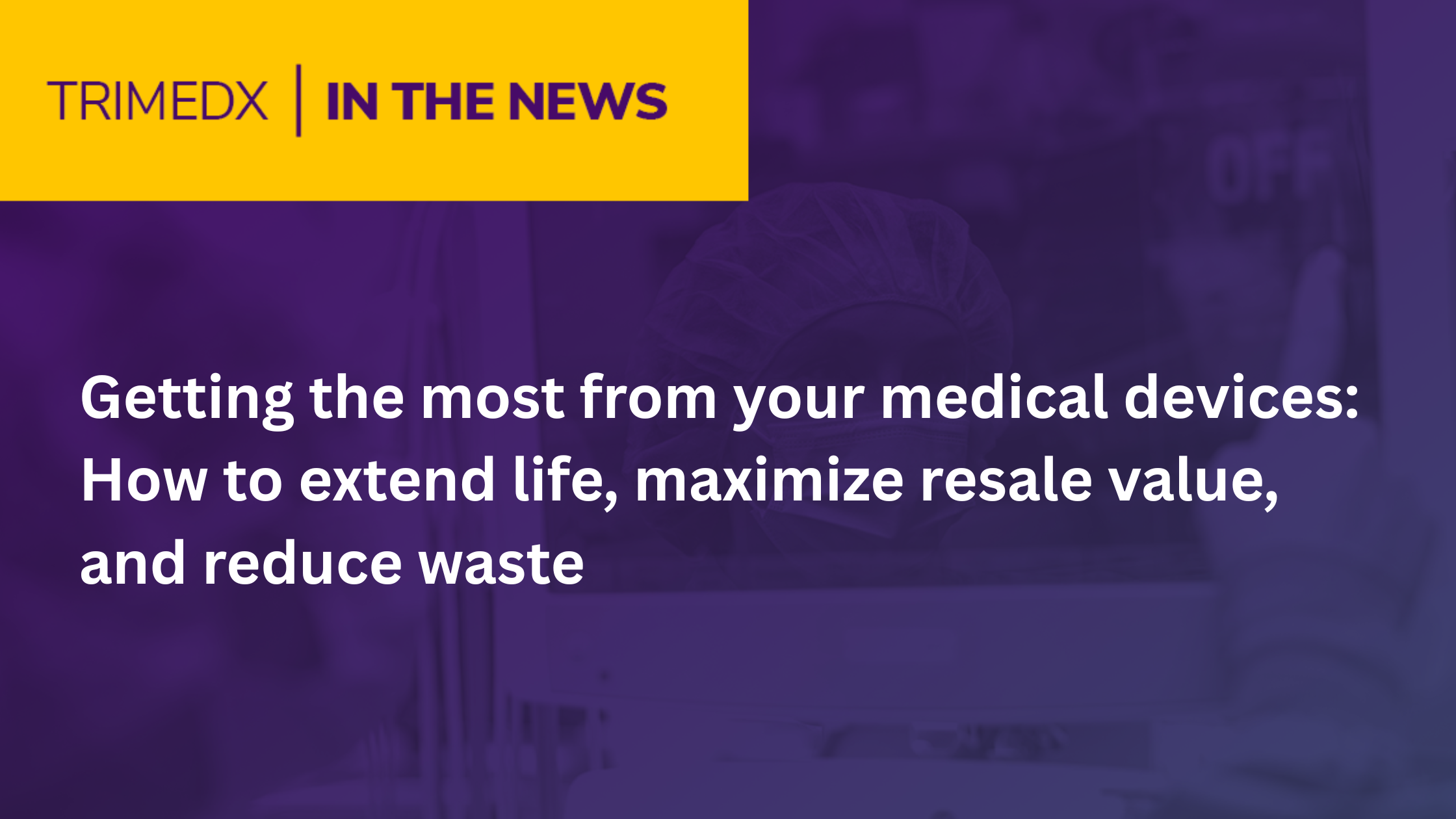TRIMEDX Vice President of Clinical Asset Management Patrick Gale recently wrote an article for DOTMed HealthCare Business News about how health systems can extend the life of medical equipment, reduce landfill waste, and maximize value by properly & proactively maintaining medical devices.
Every medical device can deliver more value when it’s properly maintained. By proactively managing equipment throughout its lifecycle, health systems can extend the usable life of medical devices while preserving their resale value when it's time to retire them.
A proactive approach reduces waste, supports environmental goals, and creates new revenue opportunities through secondary markets. With the right care strategies in place, every device can deliver value far beyond its primary use—benefiting budgets, patients, and the planet alike.
Comprehensive maintenance: The foundation for longevity
Healthcare systems invest millions of dollars in their medical equipment and devices, but many organizations fail to extract the full value of these assets. On average, clinical assets represent a quarter of a health system’s capital expenses and up to 1.75% of all operating expenses. By extending the useful life of medical devices through smarter maintenance, health systems can make the most of their investments and maximize savings.
By implementing regular, data-informed upkeep, device failures can be prevented and reliability improved. Furthermore, predictive work systems and AI-driven technologies are powerful tools to detect and address device issues before they turn into serious problems. Predictive work systems can monitor medical devices, recognize the warning signs of potential issues, and proactively provide troubleshooting steps to technicians.
Cybersecurity is another vital aspect of proper equipment maintenance. As more devices become network-connected, clinical engineering and cybersecurity teams need to ensure operating systems remain secure and supported.
In addition to reducing unexpected equipment downtime and the resulting lost revenue, these strategies can also allow hospitals to use devices for longer periods of time. Equipment that is properly cared for is more likely to be safe and operational beyond the OEM-designated end-of-life.
Preserving resale and secondary market value
When health systems are proactive about device maintenance and take proper care of their inventory, the opportunity to sell equipment on the secondary market increases. Proactive maintenance boosts resale potential and helps health systems recoup a portion of their initial investment. Devices in poor condition will be less appealing to potential buyers.
Well-maintained devices including X-ray, CT, MR, infusion pumps, among many other devices can all be resold on secondary markets. However, selling used medical equipment can be costly and time-consuming, including the process of finding buyers, storing unsold equipment, and coordinating logistics and transportation. Working with a knowledgeable partner who connects medical equipment buyers and sellers—simplifies the process and reduces the cost of disposition. A partner with expertise, connections, and streamlined processes will allow health systems to extract residual value from used equipment that has been carefully maintained.
Strategic management is key to unlocking value
In addition to maintaining medical devices, leaving value on the table can be avoided by properly managing inventory. Organizations often lack visibility into their inventory—and when clarity is lacking on what equipment they own, properly maintaining the equipment becomes difficult, if not impossible, to achieve.
Without proper inventory management, old or unused equipment is often stored in backrooms, only to be discovered later with no resale value. Comprehensive management gives decision-makers intelligent insights into their inventory—including device location, utilization, service history, part availability, and expected lifespan. These analytics can also identify the optimal time to sell, trade-in, or donate devices.
Sustainability starts with smart maintenance
Maintaining equipment properly and proactively keeps devices in use longer, which reduces landfill waste and avoids premature disposition. This approach supports a circular economy by allowing the resale or donation of equipment. Extending the life of medical devices will lower the environmental footprint of the healthcare sector and support health systems’ broader sustainability goals, while recovering value.
Health systems should seek to properly maintain, strategically manage, and responsibly retire clinical devices. Identifying the right partners, processes, and technology will help organizations extend the life of medical equipment, reduce landfill waste, and recover a portion of the original investment.
